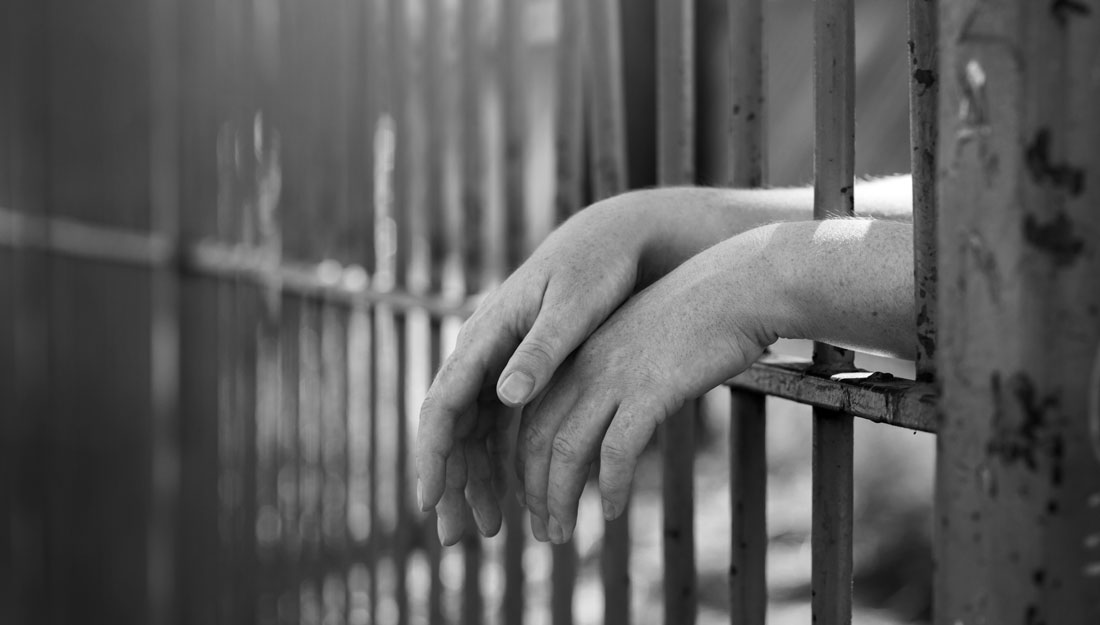- Ann Kellett, PhD
- Public Health, Research, Show on VR homepage
Study examines the mental health of women and gender minorities who were incarcerated during disasters
One of the only studies of its kind found that participants experienced fires, floods and other hazards similarly to routine neglect and abuse

The researchers found that incarcerated women viewed all trauma to be about the same in terms of harm. (Adobe Stock)
The daily challenges people who are incarcerated often face, such as limited medical care, overcrowding, over policing and limited access to resources, can be magnified during and after disasters. However, research to date that focuses on disasters and incarcerated populations is lacking, particularly regarding the mental health impacts of disasters on incarcerated people. Additionally, there are gaps in the research on how intersecting identities—such as race, gender, socioeconomic status and disability—affect their experiences during disasters. What limited research does exist to date on the topic focuses on incarcerated men.
To help close this gap, Benika Dixon, DrPH, an assistant professor of biostatistics and epidemiology at the Texas A&M University School of Public Health, and colleagues conducted a qualitative study on the mental health of women and gender minorities in the United States who had been incarcerated during disasters.
“Most emergency planning policies and practices around incarceration focus on using incarcerated people as emergency labor or on the risks that they pose to the larger community in the event of disaster-related escapes or riots,” Dixon said. “They have little or nothing about protecting incarcerated people or helping them cope with disasters.”
The other researchers on the project were Texas A&M architecture faculty member Tara Goddard, PhD, School of Public Health doctoral students TyKeara Mims and Pisila Finau, plus a researcher from the University of Houston and representatives from the Austin-based Lioness Justice Impacted Women’s Alliance, through which currently and formerly incarcerated females seek to end “the incarceration and systematic devaluing we experience within the Texas criminal legal system.”
The Texas A&M researchers have worked with Lioness on disaster-related issues for about two years. For this study, published by the Natural Hazards Center, the transdisciplinary team led four focus group sessions, each with eight to 10 participants between February and April 2024. Participants were 35 women and one person identifying as non-gender conforming who previously had been incarcerated in Texas women’s prisons. Three focus groups took place in person in Bryan-College Station, Austin and Weatherford and one was held over Zoom.
In these sessions, the participants described the hazard events they experienced while incarcerated, the prison’s response and how these events impacted their mental health during and after incarceration. They also answered questions regarding their experiences with evacuation, communication, punishment, health care resources, disability and chronic illness, mental health, race and gender and their evacuation-related needs and wants.
The researchers transcribed the focus group recordings after each session, then performed thematic analysis to identify themes and patterns.
“We found that participants had experienced significant hazards in addition to extreme heat and cold, flooding, hurricanes, structural fires, tornados, winter storms, vermin infestations and the COVID-19 pandemic,” Dixon said. “These included ongoing mental health crises, sexual and interpersonal violence and violence from staff. An important finding was that they considered all of these to be about the same in terms of harm.”
Participants reported that this was because of their inability to protect themselves by fleeing from hazards, because they did not get timely and accurate information about emergencies and felt abandoned during them, and because their experiences were uniquely gendered, as in the case when incarcerated women were forced to strip naked for a security search before they were evacuated.
These experiences had lasting impacts on participants’ mental and physical health and their ability to build relationships after leaving prison. Many, for example, stated that they feel constantly on edge and hypervigilant about their surroundings because of the neglect and trauma they experienced in prison.
Dixon said the study had several limitations. The open approach to the participants’ conversations led to a broader examination of the hazards in prisons and their mental health effects than was expected, building trust with participants was challenging and the guarantee of confidentiality meant that specific experiences or quotes cannot be linked to exact facilities or time periods.
“Despite these limitations, our findings have important policy and practice implications for public health, emergency management and prison management,” Dixon said. “These include the need for mental health support before, during and after disasters that is also tailored to this group’s unique needs, ongoing support services, stronger safeguards against sexual and other violence and increased communications and protocols regarding disasters.”
Media contact: media@tamu.edu


